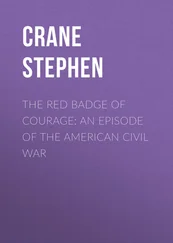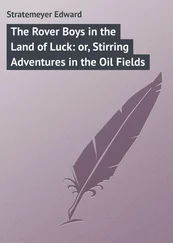Stephen Fry - The Ode Less Travelled - Unlocking The Poet Within
Здесь есть возможность читать онлайн «Stephen Fry - The Ode Less Travelled - Unlocking The Poet Within» весь текст электронной книги совершенно бесплатно (целиком полную версию без сокращений). В некоторых случаях можно слушать аудио, скачать через торрент в формате fb2 и присутствует краткое содержание. Жанр: Старинная литература, на английском языке. Описание произведения, (предисловие) а так же отзывы посетителей доступны на портале библиотеки ЛибКат.
- Название:The Ode Less Travelled: Unlocking The Poet Within
- Автор:
- Жанр:
- Год:неизвестен
- ISBN:нет данных
- Рейтинг книги:3 / 5. Голосов: 1
-
Избранное:Добавить в избранное
- Отзывы:
-
Ваша оценка:
- 60
- 1
- 2
- 3
- 4
- 5
The Ode Less Travelled: Unlocking The Poet Within: краткое содержание, описание и аннотация
Предлагаем к чтению аннотацию, описание, краткое содержание или предисловие (зависит от того, что написал сам автор книги «The Ode Less Travelled: Unlocking The Poet Within»). Если вы не нашли необходимую информацию о книге — напишите в комментариях, мы постараемся отыскать её.
The Ode Less Travelled: Unlocking The Poet Within — читать онлайн бесплатно полную книгу (весь текст) целиком
Ниже представлен текст книги, разбитый по страницам. Система сохранения места последней прочитанной страницы, позволяет с удобством читать онлайн бесплатно книгу «The Ode Less Travelled: Unlocking The Poet Within», без необходимости каждый раз заново искать на чём Вы остановились. Поставьте закладку, и сможете в любой момент перейти на страницу, на которой закончили чтение.
Интервал:
Закладка:
An open form whose qualities have appealed to few in recent times is the SPENSERIAN STANZA, which Edmund Spenser developed from the ottava rima of Tasso and Ariosto for his epic, The Faerie Queen . But you never know, it might be the very structure you have been looking for all these years. The rhyme-scheme is seen to be ababbcbcc , and is cast in eight lines of iambic pentameter followed by an iambic alexandrine. Byron used the form in ‘Childe Harold’s Pilgrimage’, and Keats in ‘The Eve of Saint Agnes’:Saint Agnes’ Eve–Ah, bitter chill it was!The owl, for all his feathers, was a-cold;The hare limp’d trembling through the frozen grass,And silent was the flock in woolly fold:Numb were the Beadsman’s fingers, while he toldHis rosary, and while his frosted breath,Like pious incense from a censer old,Seem’d taking flight for heaven, without a death,Past the sweet Virgin’s picture, while his prayer he saith.
Clive James is one of the few poets I know to have made something new and comic of the Spenserian Stanza: his epistolary verse to friends published in his collection Other Passports contains some virtuoso examples, well worth looking at if you are thinking of trying the form: it includes the excellent admonitory alexandrine, ‘You can’t just arse around for ever having fun.’ Martin Amis, to whom the verse was written, certainly took the advice, as we know. I am aware of few modern serious poems in the form, the last significant work appearing to be Tennyson’s ‘The Lotos-Eaters’, although Cambridge University offers an annual 5Spenserian Stanza Competition open to all comers of any age or fighting weight, which ‘fosters and recognizes student excellence in the writing of Spenserian stanzas’ and is sponsored by the International Spenser Society, no less. The past winners appear to have written theirs very much in the style of Spenser himself, complete with phalanxes of recondite archaic Spenserian words and syntax, rather than to have exhibited any interest in demonstrating the form’s fitness for modern use, which seems a pity.
A DOPTING AND A DAPTING
Other stanzaic forms are mentioned in the Glossary, the VENUS AND ADONIS STANZA, for example. Of course it remains your decision as to how you divide your verse: into general quatrains or tercets and so on, or into more formal stanzaic arrangements such as ottava rima or ruba’iat, or any self-invented form you choose. Ted Hughes wrote his poem ‘Thistles’ in four stanzas of three-line verse. Tercets, if one wishes to call them that, but very much his own form for his own poem.Against the rubber tongues of cows and the hoeing hands of menThistles spike the summer airOr crackle open under a blue-black pressure.Every one a revengeful burstOf resurrection, a grasped fistfulOf splintered weapons and Icelandic frost thrust upFrom the underground stain of a decaying Viking.They are like pale hair and the gutturals of dialects.Every one manages a plume of blood.Then they grow grey, like men.Mown down, it is a feud. Their sons appear,Stiff with weapons, fighting back over the same ground.
You may think that this is arbitrary–enjambment between stanzas two and three shows that each does not wholly contain its own thought. Hughes is following no closed or open form, why then should he bother to set his verse in stanzas at all? Why not one continuous clump of lines? All kinds of neat arguments could be made about the poem itself needing, as the ground does, to fight the random aggression of its thistling, bristling words, to be farmed; then again, maybe four stanzas reflect the four seasons of the thistles’ birth, flourishing, death and rebirth; or one might think the stanzas in their short definitive shape chime with the plainly laid down statements Hughes makes, but I do not think such sophistry, even when it convinces, is necessary. We see, we feel, we know that the layout is just plain right . Imagine the same lines in one group: something is lost. Perhaps Hughes wrote it as a single stream of lines and then realised that they needed arrangement into four groups of three much as an artist might realise that he needs to regroup his landscape, rubbing out a tree in the background, foregrounding that clump of bushes, moving the church spire to the right and so on. The artist does not consult a book on composition or apply absolutely set rules learned at art school, he just feels, he just knows . Experience and openness, instinct and a feel for order, these are not taught, but they are not entirely inborn either. Reading, preparation, concentration and a poetic eye that is every bit as attuned as a poetic ear all contribute to the craftsmanship, the poetic skill that might, in time, make such judgements second nature.
If, then, you wish to use your own stanzas, rhyming or not, organised in traditional or personal ways, allow yourself to feel that same sense of composition and rightness, just as you might when arranging knick-knacks and invitations on a mantelpiece or designing a birthday card. It is not a question of right and wrong, but nor is it a question of anything goes. Incidentally, do allow yourself to enjoy Hughes’s use of the word ‘fistful’–a fabulous consonantal and assonantal play on ‘thistle’, rhyming back to the first word of the second line. Is it not divine ?
An open quatrain form whose qualities are sui generis enough to deserve a whole section on its own is the ballad . It is our next stop–once the following exercise is done.
Poetry Exercise 11
As you can see I have headed each section above with my own attempts to describe each stanza form under discussion in its own dress. Your exercise is to do the same but better . I look forward to bumping into you one day in the street or on a train and hearing you recite to me in triumphal tones your self-referential rhymes royal and auto-descriptive Ruba’iyat.
III
The Ballad
In fours and threes and threes and fours
The BALLADbeats its drum:
‘The Ancient Mariner’ of course
Remains the exemplum.
With manly eights (or female nines)
You are allowed if ’tis your pleasure,
To stretch the length to equal lines
And make a ballad of LONG MEASURE.
Well, what more need a poet know?
In technical prosodic parlance we could say that most ballads present in quatrains of alternate cross-rhymed iambic tetrameter and trimeter . However, since the ballad is a swinging, popular form derived from song and folk traditions it is much better described as a form that comes in four-line verses, usually alternating between four and three beats to line. The word comes from ballare , the Italian for ‘to dance’ (same root as ballet, ballerina and ball).
The ballad’s irresistible lilt is familiar to us in everything from nursery rhymes to rugby songs. We know it as soon as we hear it, the shape and the rhythm seem inborn:There’s nothing like a ballad songFor lightening the load–I’ll chant the buggers all day longUntil my tits explode.A sweetly warbled ballad verseWill never flag or tireI sing ’em loud for best or worseThough both my balls catch fire.I’ll roar my ballads loud and gruff,Like a lion in the zooAnd if I sing ’em loud enough’Twill tear my arse in two.
Or whatever. Old-fashioned inversions, expletives (both the rude kind and the kind that fill out the metre) and other such archaic tricks considered inadmissible or old-fashioned in serious poetry suit the folksy nature of ballad. The ballad is pub poetry, it is naughty and nautical, crude and carefree. Its elbows are always on the table, it never lowers the seat for ladies after it’s been or covers its mouth when it burps. It can be macabre, brutal, sinister, preachy, ghostly, doom-laden, lurid, erotic, mock-solemn, facetious, pious or obscene–sometimes it exhibits all of those qualities at once. Its voice is often that of the club bore, the drunken rogue, the music hall entertainer or the campfire strummer. It has little interest in descriptions of landscape or the psychology of the individual. Chief among its virtues is a keen passion to tell you a story: it will grab you by the lapels, stare you in the eyes and plunge right in:Now gather round and let me tellThe tale of Danny Wise:And how his sweet wife AnnabelleDid suck out both his eyes.And if I tell the story trueAnd if I tell it clear,There’s not a mortal one of youWon’t shriek in mortal fear.
Читать дальшеИнтервал:
Закладка:
Похожие книги на «The Ode Less Travelled: Unlocking The Poet Within»
Представляем Вашему вниманию похожие книги на «The Ode Less Travelled: Unlocking The Poet Within» списком для выбора. Мы отобрали схожую по названию и смыслу литературу в надежде предоставить читателям больше вариантов отыскать новые, интересные, ещё непрочитанные произведения.
Обсуждение, отзывы о книге «The Ode Less Travelled: Unlocking The Poet Within» и просто собственные мнения читателей. Оставьте ваши комментарии, напишите, что Вы думаете о произведении, его смысле или главных героях. Укажите что конкретно понравилось, а что нет, и почему Вы так считаете.










